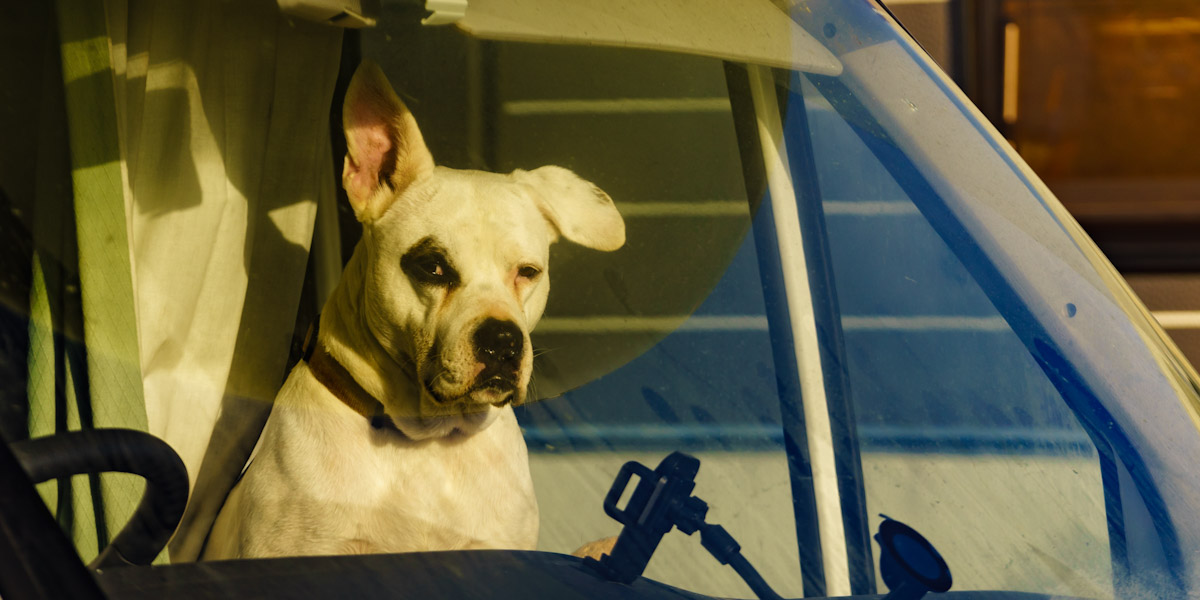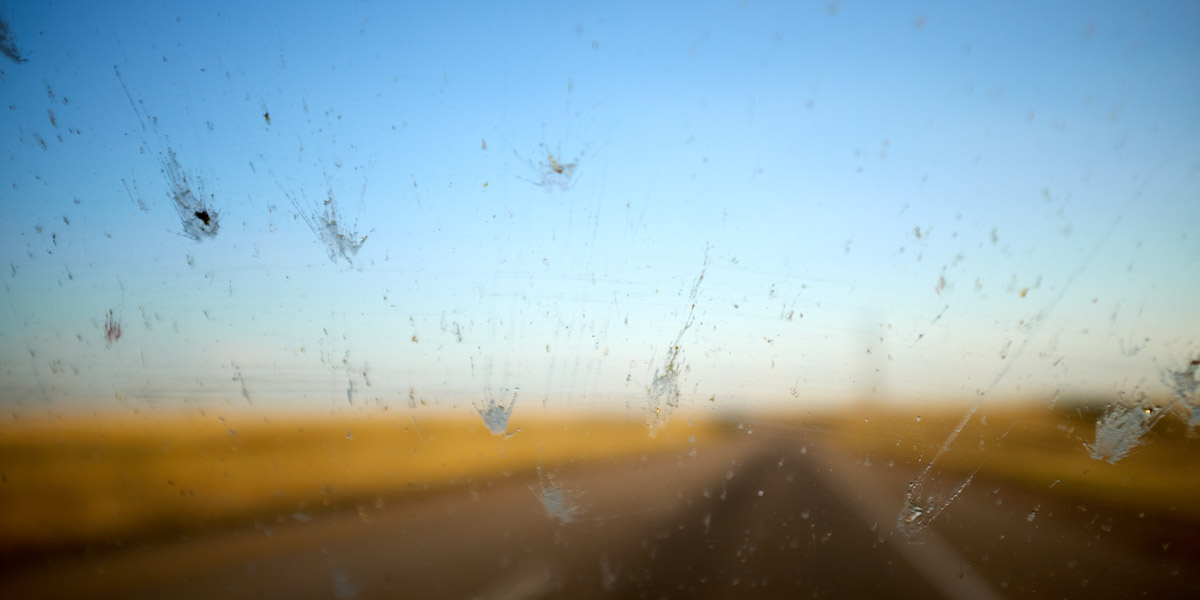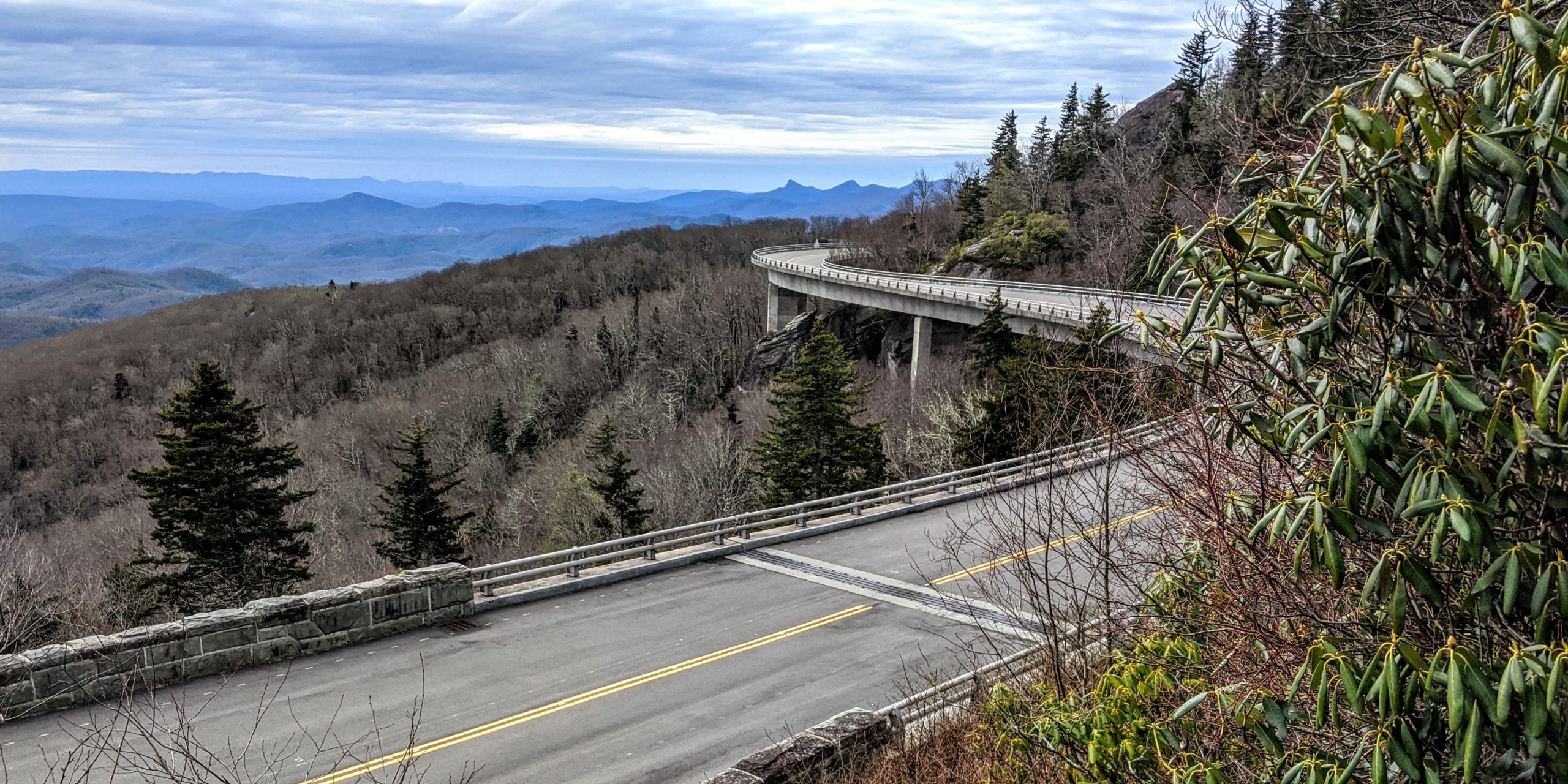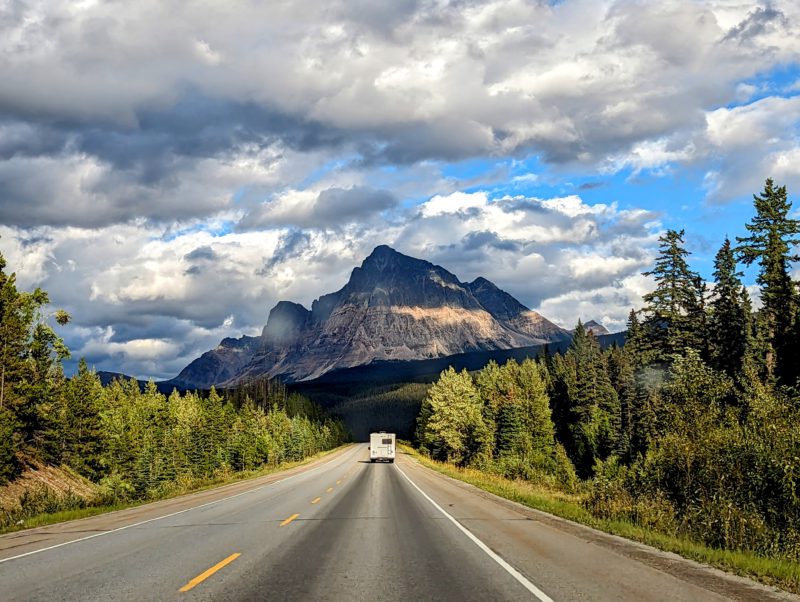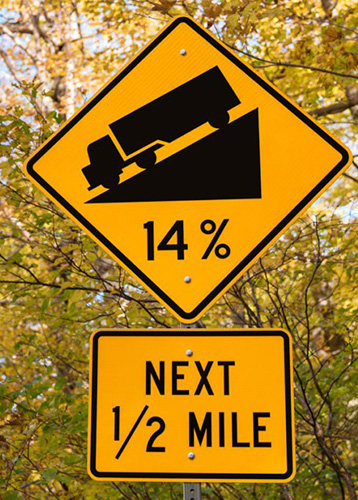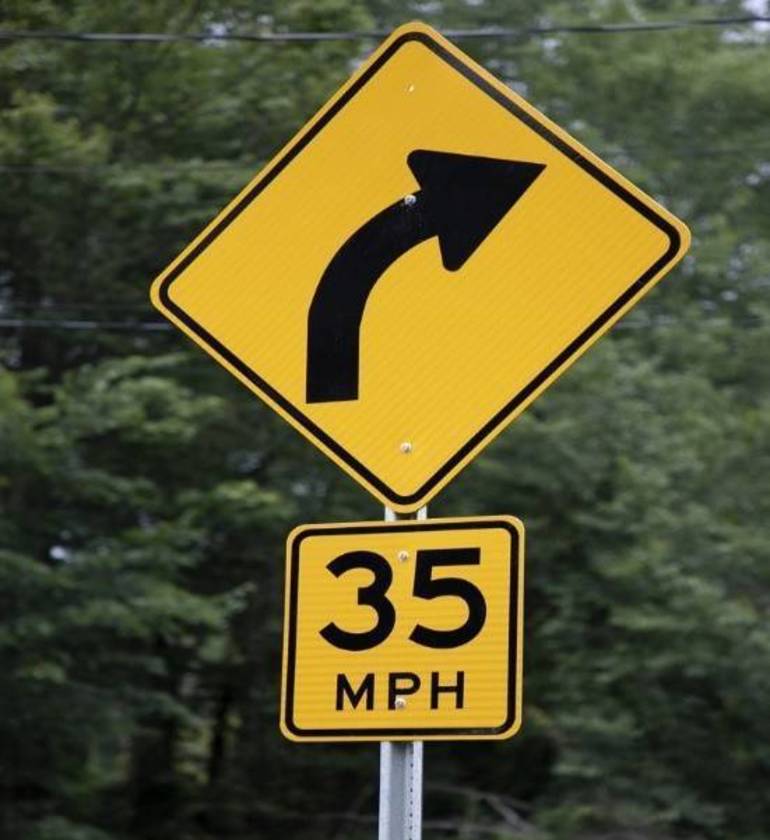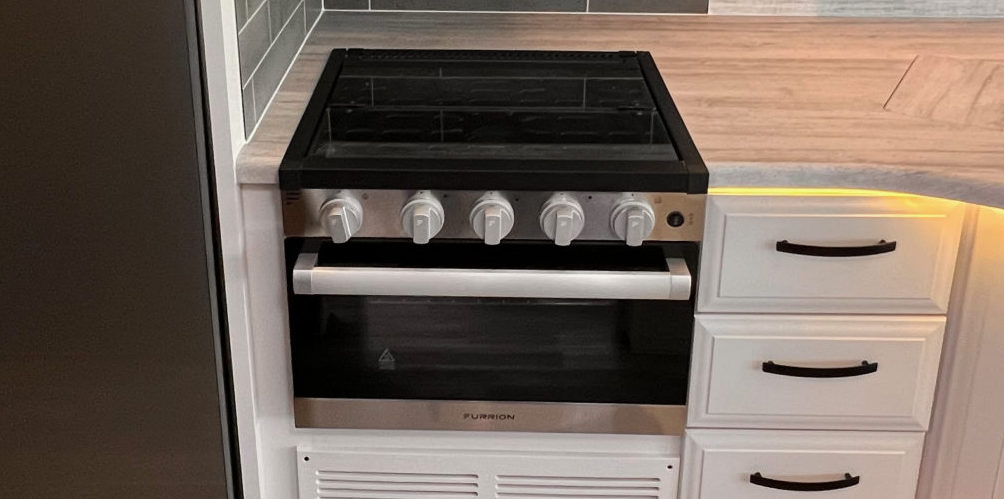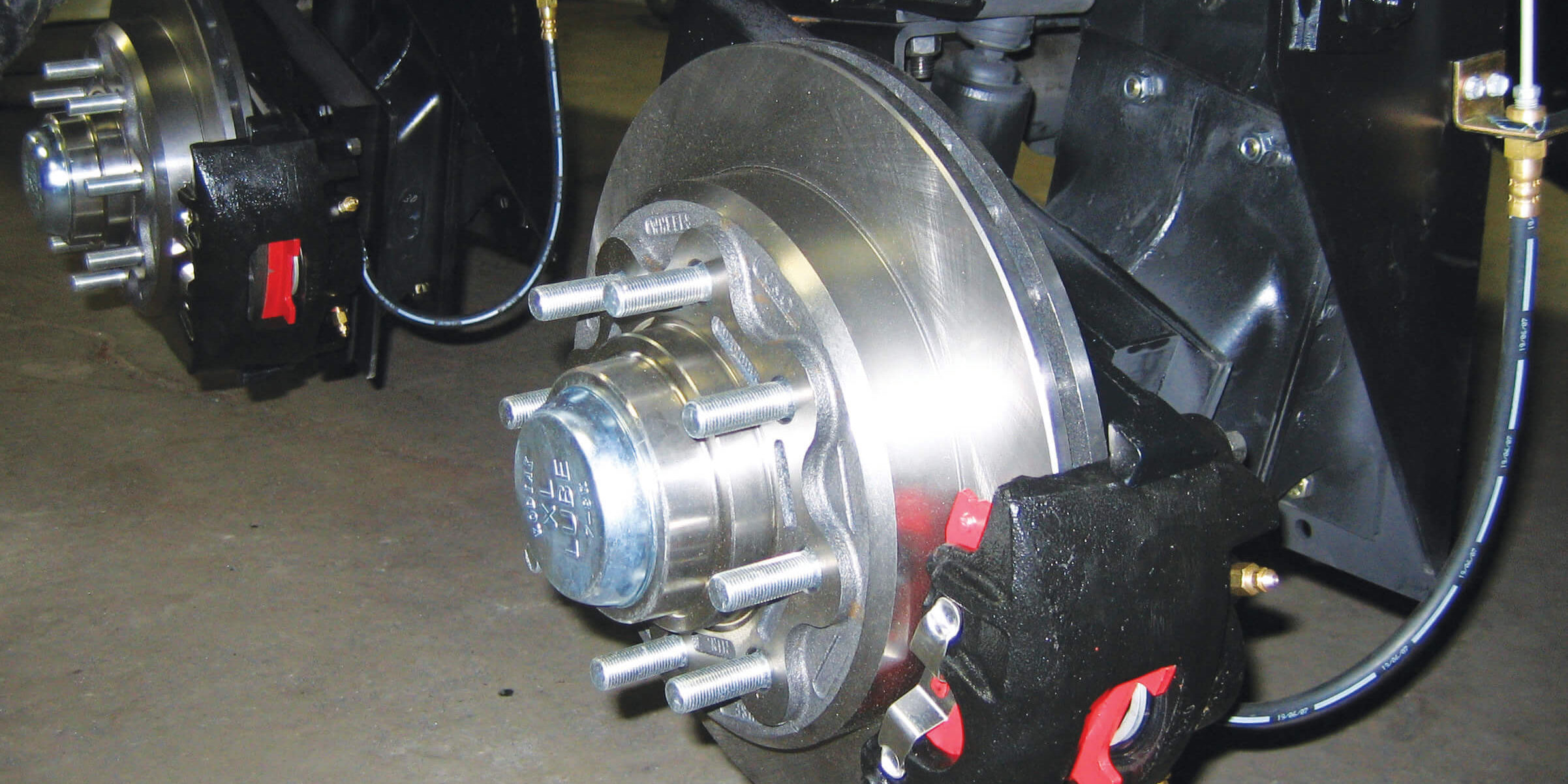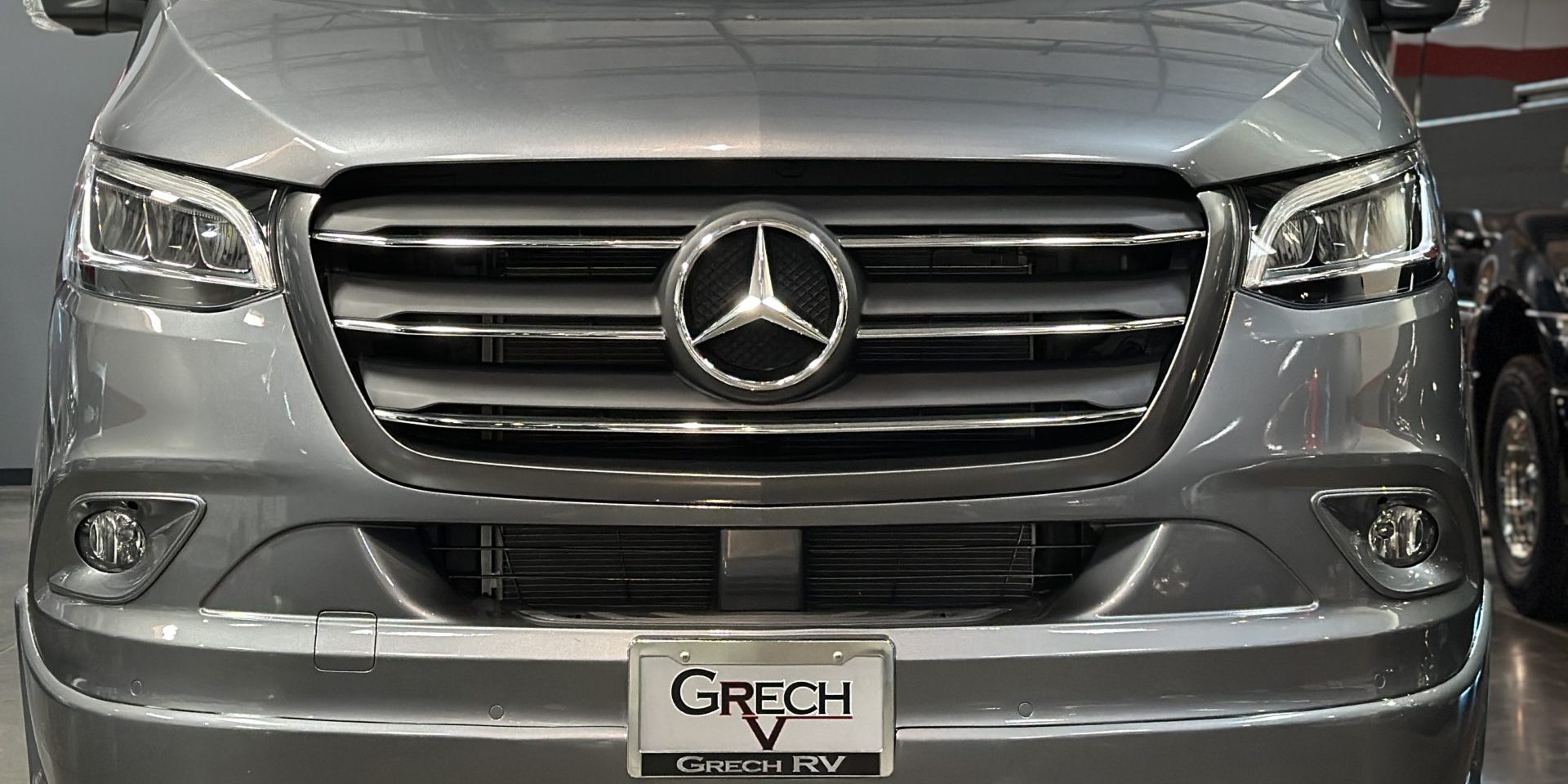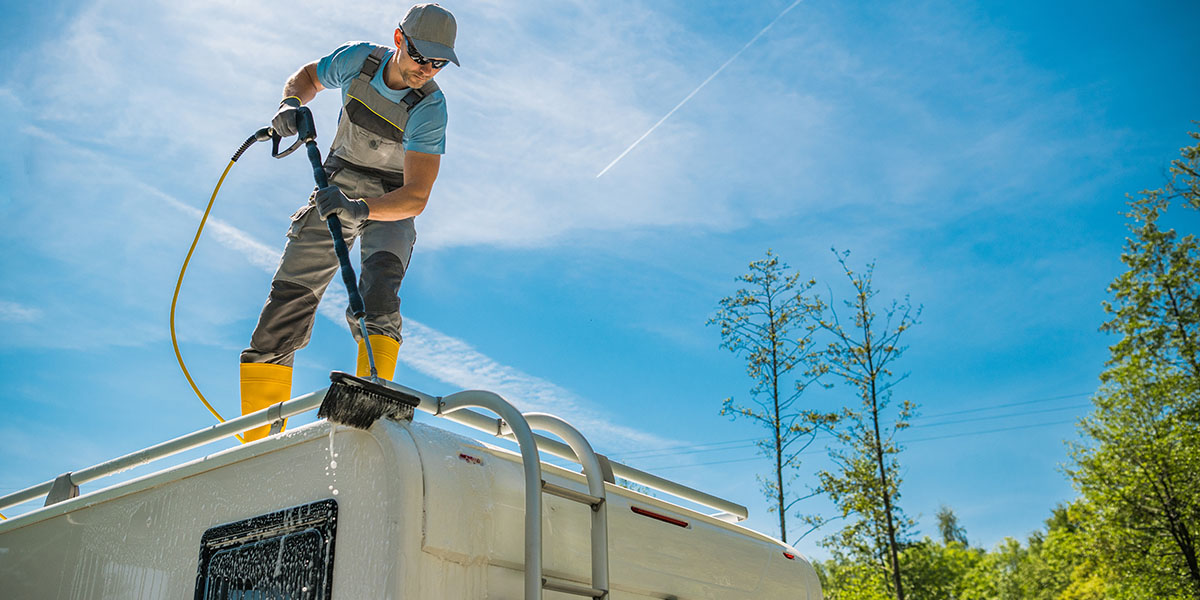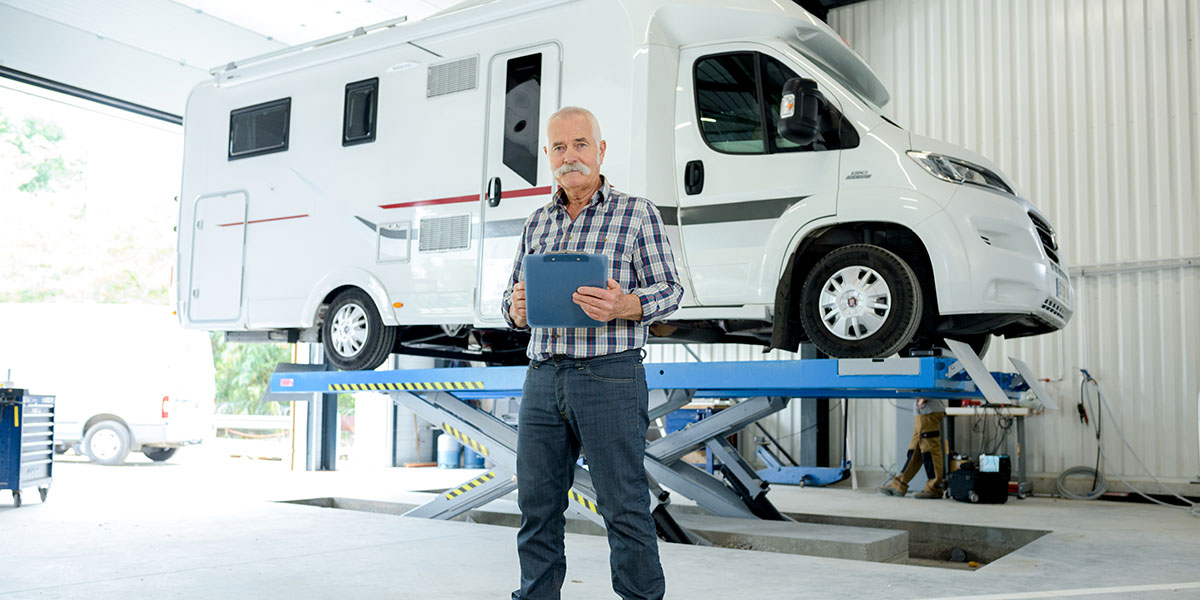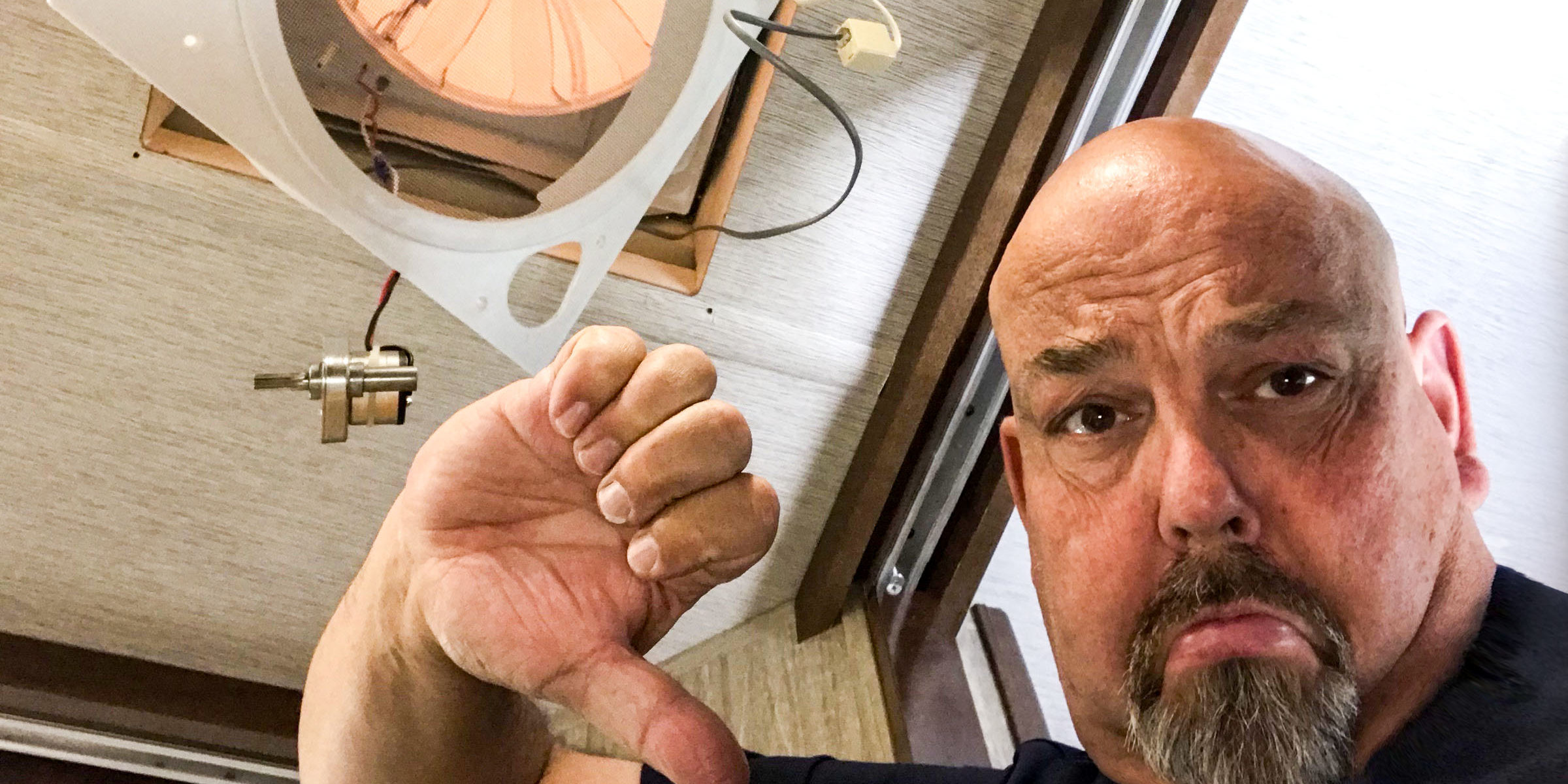Being able to travel with your four-legged kiddos is one of the best parts of RV life — but it can also be one of the most chaotic. Our two pups, Wilson and Journey, have been road-tripping with us for years, and they’ve helped us learn what really matters when choosing a pet-friendly RV as a dog owner. From muddy paw prints and surprise zoomies to snuggling up with them for a good movie on a cold night, we’ve seen it all throughout our 100,000-plus miles on the road.
So, whether you’re a dog owner shopping for your first rig or looking for a more pet-friendly RV, here’s what to look for when choosing a model that keeps both you and your canine companions comfortable, safe, and happy.
1. Consider Floorplan Flow: The Dog Traffic Test
We’ve experienced nearly every size and style with Wilson and Journey. From cavernous fifth wheels to a class B campervan, we’ve made it work with them because we’ve managed this key aspect.
When you travel with dogs, space matters — especially on rainy days when everyone’s inside and you’ve just come back from a wet and muddy bathroom walk. Because at that point, the last thing you want is them having to share bed or couch space with you or track mud all over your rig.
Look for floorplans that allow for easy movement. Slides can be a huge bonus, creating extra room for a dog bed or allowing your pets to stretch out without blocking every path to the bathroom or fridge.
We find that open layouts and passthrough hallways often work best. Rear or easy access bath layouts can also help if you need a spot to dry off muddy paws before you do let them jump back up on the couch with you.
Pro Tip: When walking through RVs, imagine your dog pacing alongside or just behind you. Is there room to move freely without stepping on tails or bowls? We chose a more open twin-bed layout with a rear bath for our campervan days, and that worked great for us. We could even convert the twins to a king bed and still have room for everyone.
2. Check for Durable Flooring: Say No to Carpet
Carpet and dogs? Let’s just say it’s a relationship that rarely ends well. After years of full-time travel, we got rid of the carpet at the house we bought quickly, because the difference is night and day. And the same goes for RVs.
Between shedding, drool, mud, sand, and the occasional accident, it’s smart to prioritize flooring that’s easy to clean. Vinyl or laminate floors are durable, quick to sweep, and more forgiving when it comes to pet hair or muddy paws. Bonus points for textured flooring that doesn’t get slippery when wet.
Pro Tip: Having a hand vacuum and cleaning wipes in easy reach of the entrance can make your life a lot cleaner and easier to manage. And if you can fit a nice entrance rug to clean feat and paws, your golden.
3. Ease Pup Access: Pet-Friendly RV Entryways
Some RVs have high or narrow steps that can be tough for senior dogs or short-legged breeds. If you’re traveling with an older pup (or one that just thinks they’re royalty), wider steps or lower profiles can make a big difference.
Class C motorhomes and travel trailers tend to have lower entry points compared to fifth wheels or motorhomes with air suspension. Look for an pet-friendly RV with a solid, stable step system — or plan to upgrade with a pet ramp or foldable stair cover.
Pro Tip: Look for models with grab handles near the door. You’ll use them too, but they’re also helpful for dogs who need a little assist on the way in or out.
4. Choose Climate Control: Dogs Can’t Sweat It Out
We all know how dangerous it can be for pets left in hot vehicles — even for a few minutes. In RVs, that danger can extend to your entire house-on-wheels during summer heat or shoulder-season sun.
Look for RVs with strong insulation and quality AC, or multiple AC units in larger models, so that cooling and keeping the RV cool is not an issue. If you’re planning on boondocking then having a good generator that has the ability to run your cooling system is a must. You may be able to run some A/C systems on a big battery and solar system with the right inverter and setup, but that can be expensive and unwise to try unless you really know what you are doing. Backup power in the form of a good generator is usually the best option.
Ducted air and ceiling fans (like MaxxAir or Fantastic Fans) can make a huge difference in airflow as well, especially if you have open layouts with good windows. So, these are good to look for when purchasing your pup-friendly home on wheels.
On the flip side, having a good heating system like a furnace or heat pump if you plan on partaking in some cold-weather camping is also a must. Because just like overheating can be a big issue, so can freezing temperatures.
Pro Tip: Consider installing a temperature monitor in your RV that alerts your phone if things get too hot or too cold. Peace of mind is priceless. We have one, and when connected to our Starlink, we can check on the pups’ comfort level while out and about if we have cell signal.
5. Think Outdoors Too: Shade and Tie-Outs
If your dog loves lounging outdoors as much as ours do, pay close attention to the exterior of your RV.
- Does it have a large awning for shade?
- Are there outdoor power outlets for a fan or pet monitor?
- Is there a convenient place to attach a leash or tie-out?
Some rigs even have built-in exterior sprayers — perfect for rinsing off dirty paws after a hike or beach day.
Pro Tip: A small outdoor mat can help keep sand, dirt, and pine needles from getting tracked into the RV.
6. Dig into Storage: For All Their Stuff (and Yours)
We’ve learned the hard way that dog gear adds up fast. Travel bowls, extra leashes, waste bags, food containers, medications, beds, toys, towels—you get the idea.
Look for RVs with ample storage space. Under-bed compartments, pantry closets, and pass-through bays give you flexibility to stash both pet gear and your own essentials.
Pro Tip: Use clear plastic bins to organize your pet’s things. Label them and tuck them under the dinette, under the bed, or in the outside pass-through. That way, everything has a place — and nothing smells like dried kibble in your living space.
7. Sniff Out Dog-Safe Features: A Few Pointers
While not every RV comes with a “dog package,” here are a few bonus features that can make your life easier:
- Window placement at nose level. Dogs love to look out the window. A low window in the living area can keep them entertained during downtime.
- Screen doors with pet guards. If your pup likes to paw at the door, a reinforced screen will help avoid accidental jail breaks.
- Built-in feeding drawers. Some high-end models offer pull-out pet feeding stations under the fridge or cabinets. Not necessary — but pretty neat. Our Class B van came with one, and it was great.
Pro Tip: If your RV doesn’t come with these extras, a little DIY goes a long way.
8. Consider Travel Safety: Harnesses and Crates
Your dog may love riding shotgun — but safety should still come first. Look for rigs that have safe areas for traveling pets, especially during long driving days. Some RVers use seat-belt-compatible harnesses or soft-sided crates anchored to furniture.
If your dog is crate-trained, measure your crate and make sure it fits in the rig before you buy. Dinette benches, under-bed spaces, and slide-out areas are good options.
Pro Tip: Practice drive days with short trips before a big adventure, because not all pets passengers are the same. You want to know what their travel style and comfort level is before heading out on a big adventure. If you can rent a pet-friendly RV before purchasing one, then that is a great idea.
Tail-Wagging Travel Starts with the Right Rig
At the end of the day, a pet-friendly RV doesn’t need to be custom-built for dogs to be a great home on the road. It just needs to work for your unique crew. Whether you’re boondocking in the desert or parked at a campground near the beach, a pet-friendly setup can make travel smoother, more comfortable, and a lot more fun for everyone involved.
And while your dog might not care about the layout or solar setup, they’ll definitely appreciate having a cozy spot to curl up near you after a long hike, a safe place to nap while you’re on the road, and a view out the window to see the cool places you’ve brought them to.
So, as you’re evaluating your next RV, take a moment to think like a dog. (No, seriously — get down on their level.) You might be surprised at how a few thoughtful features can make all the difference you and them on you travels.
